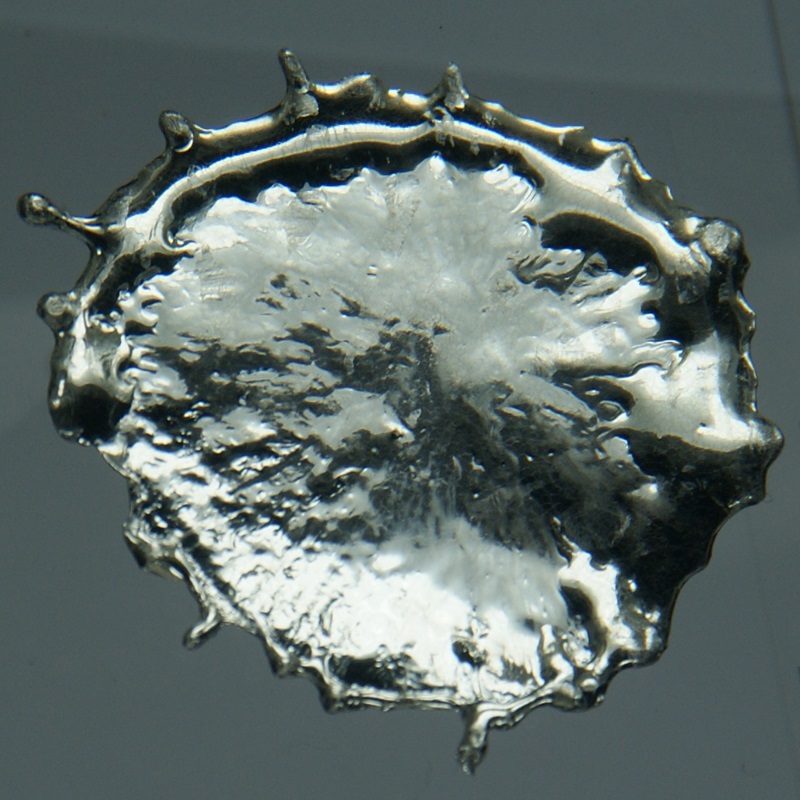قلع
50
Sn
گروه
۱۴
تناوب
5
بلوک
p
پروتون ها
الکترون ها
نوترون ها
50
50
69
ویژگیهای عمومی
عدد اتمی
50
عدد جرمی
۱۱۸٫۷۱
عدد جرمی
119
دسته
فلزات پس واسطه
رنگ
نقره ای
رادیو اکتیو
خیر
The Latin word for tin is stannum
ساختار کریستالی
چهار وجهی مرکزی
تاریخچه
Tin was first smelted in combination with copper around 3500 BC to produce bronze.
The oldest artifacts date from around 2000 BC.
Cassiterite, the tin oxide form of tin, was most likely the original source of tin in ancient times.
British scientist Robert Boyle published a description of his experiments on the oxidation of tin in 1673.
The oldest artifacts date from around 2000 BC.
Cassiterite, the tin oxide form of tin, was most likely the original source of tin in ancient times.
British scientist Robert Boyle published a description of his experiments on the oxidation of tin in 1673.
الکترون های هر لایه
2, 8, 18, 18, 4
ساختار الکترونی
[Kr] 4d10 5s2 5p2
When a bar of tin is bent, a crackling sound known as the tin cry can be heard
خواص فیزیکی
جنس
جامد
چگالی
۷٫۲۸۷ g/cm3
نقطه ذوب
۵۰۵٫۰۸ K ۲۳۱٫۹۳ | °C ۴۴۹٫۴۷ °F
نقطه جوش
۲۸۷۵٫۱۵ K ۲۶۰۲ | °C ۴۷۱۵٫۶ °F
گرمای همجوشی
۷ kJ/mol
گرمای تبخیر
۲۹۰ kJ/mol
ظرفیت گرمایی ویژه
۰٫۲۲۸ J/g·K
فراوانی در پوسته زمین
۰٫۰۰۰۲۲%
فراوانی در جهان
۴×۱۰-۷%

شماره ثبت سیایاس
7440-31-5
عدد CID پاب کم(PubChem)
۵۳۵۲۴۲۶
خواص اتمی
شعاع اتمی
۱۴۰ pm
شعاع کووالانسی
۱۳۹ pm
الکترونگاتیویته
۱٫۹۶ (درجه پاولینگ)
پتانسیل یونیزاسیون
۷٫۳۴۳۹ eV
حجم اتمی
۱۶٫۳ cm3/mol
رسانایی گرما
۰٫۶۶۶ W/cm·K
حالات اکسید شدن
-4, 2, 4
کاربرد ها
Tin is used as a coating on the surface of other metals to prevent corrosion.
It has long been used as a solder in the form of an alloy with lead.
Tin salts sprayed onto glass are used to produce electrically conductive coatings.
Tin chloride is used as a mordant in dyeing textiles and for increasing the weight of silk.
It has long been used as a solder in the form of an alloy with lead.
Tin salts sprayed onto glass are used to produce electrically conductive coatings.
Tin chloride is used as a mordant in dyeing textiles and for increasing the weight of silk.
Tin is considered to be non-toxic but most tin salts are toxic
ایزوتوپ ها
ایزوتوپ های پایدار
112Sn, 114Sn, 115Sn, 116Sn, 117Sn, 118Sn, 119Sn, 120Sn, 122Sn, 124Snایزوتوپ های ناپایدار
99Sn, 100Sn, 101Sn, 102Sn, 103Sn, 104Sn, 105Sn, 106Sn, 107Sn, 108Sn, 109Sn, 110Sn, 111Sn, 113Sn, 121Sn, 123Sn, 125Sn, 126Sn, 127Sn, 128Sn, 129Sn, 130Sn, 131Sn, 132Sn, 133Sn, 134Sn, 135Sn, 136Sn, 137Sn